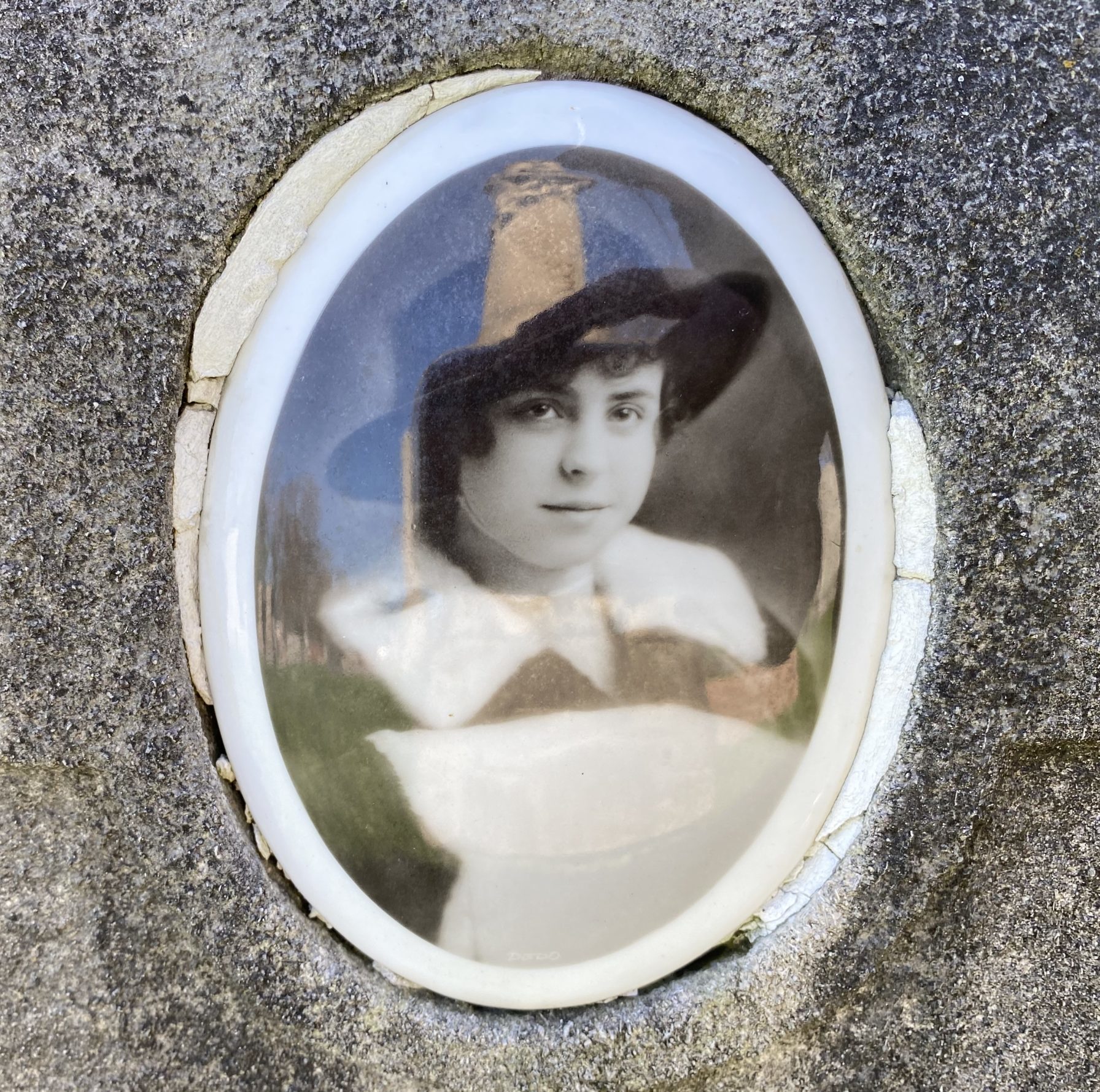4 February 1895 – 12 August 1942
Every now and then, I come across census or death records that indicate a person was in Manteno, Illinois, and I’ve learned that almost always means something pretty bad if they had previously been living in Chicago as that was the home of the notorious Manteno State Mental Hospital.
Anna was born in Chicago to Russian immigrants Meyer and Ida (Gurwitz) Harris and was the oldest of six (five surviving childhood). Her father died when she was just nineteen years old and her youngest sibling, sister Lillian, was just a toddler. However, both Anna and her mother were also trained in the family business of photography and continued to work in that field to support the family. I’m sure this explains the family’s excellent cameo portraits (I only snapped hers as the light was not cooperating but all were pretty great).
In 1920, Anna was 25, still single, still at home, but whether it’s an oversight on the census-taker’s part or some kind of early indication of problems to come, there is no occupation listed for her. She remained unmarried for almost the entire next 10 years before the 1930 census. Her “age at first marriage” response on that census matched her age at the time the census was taken, and though I couldn’t find their marriage certificate, the timing suggests she’d married less than a year before the census was held. She and her new husband George Sankstone were living with Ida and little sister Lillian.
George was a lawyer as was his father; at least one of his brothers was a doctor; and the Sankstone family had a live-in servant for several censuses, so one would think this was an excellent marriage, but something happened between 1930 and 1940: Either Anna really did have mental health issues or some kind of breakdown OR George used his authority to put her away for behaving in a way he didn’t like. It’s also possible she suffered from tuberculosis, as Manteno had a wing dedicated to those patients, but secondary evidence suggests something more dramatic that would also have led to the breakup of the marriage.
Whatever the reason, though I couldn’t find Anna in the 1940 census, George does show up living alone though still listing himself as married. However, when Anna died just two years later, her death record listed her as divorced. Perhaps the divorce was in process in 1940; perhaps George didn’t want to style himself divorced on the census. He and Anna had no children together.
Manteno opened in 1930 and by the time of Anna’s death in 1942, it was already overpopulated and facing budget cuts and staff loss to the war effort. A typhoid epidemic had swept through the hospital in 1939 as well, killing 60 and infecting 400 patients. The tuberculosis ward had opened in 1937, so as mentioned previously, it’s possible Anna’s tenure was related to that rather than to mental illness, but it does not seem the hospital was well run in any of its departments.
Abuse, neglect, and barbaric “therapeutic” experiments including electroshock therapy, lobotomies, and highly unethical procedures done without anyone’s consent (patient or their families) were done there and tragically, Anna’s tenure was during these years. From what we know of Manteno, it’s likely she died of something done or not done for her and not from whatever she was ostensibly sent to that institution to be cured of.
Ida died just three years later and was buried with her husband, daughter, and son who had died in childhood. Another son was buried on the family lot a few years later.
George lived until 1959 and had been running for alderman when he died of a heart attack just before the election. He too is buried at Waldheim, presumably with his own parents.
RIP Anna
Please visit my Instagram for any questions or comments on this post!
